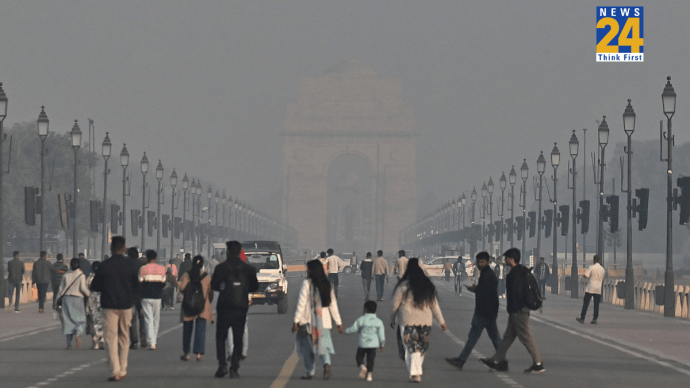Chandrayaan-3: The hopes of the India takes off with the successful launch of the GSLV Mark 3 (LVM 3) heavy-lift launch vehicle on Friday from the Satish Dhawan Space Centre in Andhra Pradesh’s Sriharikota as per scheduled launch time.
LVM3 M4/Chandrayaan-3 Mission:
Mission Readiness Review is completed.
The board has authorised the launch.
The countdown begins tomorrow.---Advertisement---The launch can be viewed LIVE onhttps://t.co/5wOj8aimkHhttps://t.co/zugXQAY0c0https://t.co/u5b07tA9e5
DD National
from 14:00 Hrs. IST…---Advertisement---— ISRO (@isro) July 12, 2023
Notably, the estimated time of the journey for a spacecraft from Earth to moon about a month and the landing of the Chandrayaan-3 is expected on August 23. After landing, it will operate for one lunar day, which is approximately 14 Earth days. One day on the Moon is equal to 14 days on Earth.
Chandrayaan-3 will make India the fourth country to land its spacecraft on the surface of the moon and demonstrate the country’s ability for safe and soft landing on the lunar surface.
Indian Space Research Organisation (ISRO) began the reverse counting for the Chandrayan-3 mission on Thursday at 14:35:17 IST ahead of take-off on Friday from the Satish Dhawan Space Centre in Sriharikota. The spacecraft will be launched on a GSLV Mark 3 (LVM 3) heavy-lift launch vehicle.
Read More: Chandrayaan-3 Mission: India set to script history
After travelling for about 40 to 50 days, the lander and rover of Chandrayaan-3 will land near the south pole of the Moon. The whole world is eyeing this moon mission. Scientists have described this mission as a game changer.
Prime Minister Narendra Modi, who is on official two day visit to france, said that Jylu 14, 2023, will always be etched in golden letters in the annals of India’s space sector history.
“This remarkable mission will carry the hopes and dreams of our nation,” PM Modi had tweeted earlier.
“Thanks to our scientists, India has a very rich history in the space sector. Chandrayaan-1 is considered to be a path breaker among global lunar missions as it confirmed the presence of water molecules on the moon. It featured in over 200 scientific publications around the world,” PM Modi wrote on Twitter.
“Till Chandrayaan-1, the moon was believed to be a bone-dry, geologically inactive and uninhabitable celestial body. Now, it is seen as a dynamic and geologically active body with the presence of water and sub-surface ice,” he added, asserting it might be potentially inhabited in the future.
Chandrayaan-3 Launch
The GSLV Mark 3 (LVM 3) heavy-lift launch vehicle, which will release the moon lander and rover into space, will lift off from Satish Dhawan Space Centre in Andhra Pradesh’s Sriharikota at 2.30 pm. The countdown for the launch began on Thursday at 14:35:17 IST, ahead of the lift-off on Friday.
The ‘Launch Rehearsal’ simulating the entire launch preparation and process was concluded earlier by the ISRO.
Chandrayaan-3 is equipped with a lander, a rover and a propulsion module. It weighs around 3,900 kilograms.
Vikram lander’s experiments include Chandra’s Surface Thermophysical Experiment (ChaSTE) to measure surface thermal properties, Instrument for Lunar Seismic Activity (ILSA) to measure seismicity around the landing site, Radio Anatomy of Moon Bound Hypersensitive ionosphere and Atmosphere (RAMBHA) to study the gas and plasma environment, and Passive laser retroreflector array provided by NASA for lunar ranging studies.













